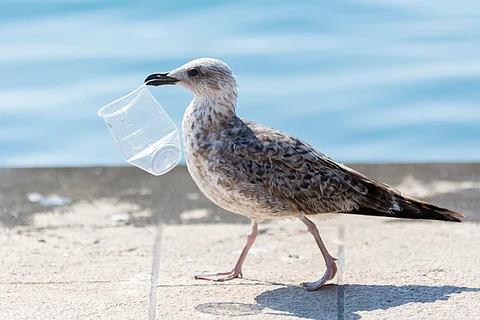

Ingesting plastic doesn’t just harm seabirds physically — it may also disrupt their hormones, according to new research.
The study, published in the journal Environmental Pollution by researchers from the University of California and the San Diego Zoo Wildlife Alliance, revealed that plastic consumed by seabirds could release chemicals that affect fertility, development and behaviour.
An estimated eight million tonnes of plastic enters the ocean each year, threatening marine wildlife with the risk of ingestion. Seabirds such as albatrosses, petrels and shearwaters are particularly vulnerable due to their foraging behaviour and unique gastric morphology, which causes them to consume and retain plastic for extended periods.
The study noted that Procellariiformes — a group that includes many oceanic bird species — have among the highest rates of plastic ingestion. Around 63 per cent of these birds were found to retain pollutants in their stomachs for weeks or even months.
Among Procellariiformes, northern fulmars (Fulmarus glacialis) are commonly used as bioindicators of marine plastic pollution. Their surface-feeding behaviour increases exposure to floating plastic debris, the study said.
“Plastic ingestion poses a dual threat, causing physical harm as well as exposure to plastic-associated chemicals. Ingested plastic can cause obstruction and perforation of the digestive tract, and a false sense of satiation, resulting in malnutrition. Small pieces of plastic (for example, micro- or nano-plastic) can penetrate cells, leading to inflammation and fibrosis,” the paper stated.
Plastics can also release toxic substances, including chemical additives used in manufacturing and absorbed organic pollutants, the scientists noted. Both humans and fulmars showed similar reactions to plastic-derived chemicals.
“We found that both human and fulmar estrogen receptors (ERs) respond similarly to plastic-associated chemicals, albeit with sensitivity differences depending on the chemical, concentration, and receptor type. Almost half of the fulmars (13 out of 27) had ingested plastic that activated or inhibited fulmar ERs after a day of solvent leaching, suggesting the potential for hormonal disruption,” the study said.
Plastic from nearly 70 per cent of these birds (9 out of 13) continued to trigger hormone receptor responses on day 5 or 14, showing that the chemicals were released over an extended period.
“Some of these plastics kept leaching active chemicals for two weeks,” Christopher Tubbs, co-author and associate director of reproductive sciences at San Diego Zoo Wildlife Alliance, said in a statement. The findings suggest seabirds are receiving a continuous dose of hormone-altering chemicals over just swallowing harmful materials, he added.
The researchers concluded that plastic additives were responsible for the hormonal disruption, underlining the biological impact of plastic pollution on seabird species.
In a statement issued by the university, lead author Liesbeth Van Hassel, whose PhD research at UC Santa Cruz contributed to the study, said: “We’ve long known that plastic ingestion can cause physical harm to seabirds, but this study shows it may also have hidden biological effects. What’s especially concerning is that these chemicals don’t just pass through — they interact with key hormone receptors in the body.”